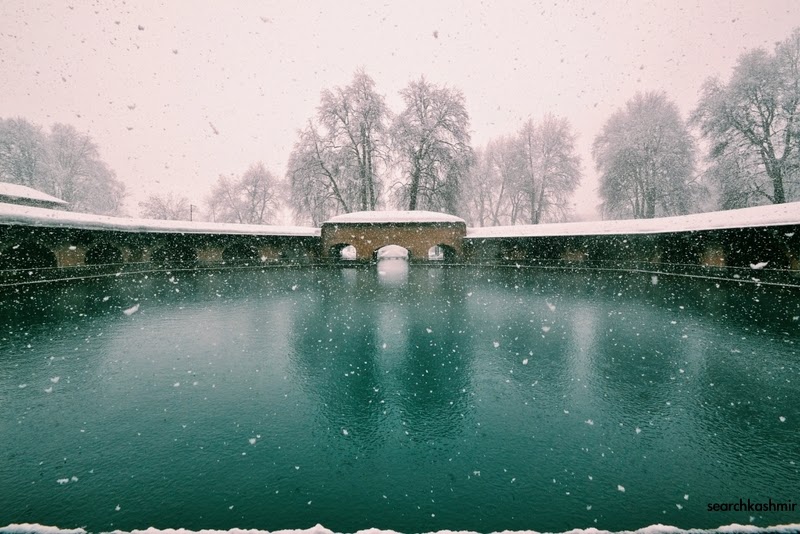
Pashmina Gabba embroidered by Smt. Sonmal Dhar.
Circa 1940s
Shared by her great granddaughter Anubha Kakroo

in bits and pieces

Pashmina Gabba embroidered by Smt. Sonmal Dhar.
Circa 1940s
Shared by her great granddaughter Anubha Kakroo
Wood carving workshop on Jhelum river.
Fateh Kadal, Urdu Bazaar.


 |
| Way to the Ghat |
 |
| Upper floor |
The entire building used to be wooden. It is now being remade in cement and bricks. The upper floor was still under works. If I could get into that floor, the view would have been something like this:
 |
| from the book Irene Petrie : Missionary to Kashmir (1903). Photographs by Geoffroy Millias. Had been trying to find the spot for quite sometime Only other option left is to find Ahmed Joo’s Shop |





 |
| Stories from Kashmir |


This entire floor was under water in the flood of 2014





He was kind enough to tell me that the shop/house once belonged to a Pandit family long ago.




-0-

Papier-mâché. Papier-mache. Knights fights with Lance, Bows, and Arrows. 1958. Brian Brake for National Geographic.
“Kashmiris adopted papier-mâché making from the Persians and made it a high art. Artists create durable trays, boxes, candlesticks, and bowls, coating them with varnish. This painted cartoon on a box copies a motif of the Moguls, 16th-century Mongol conquerors of India and Afghanistan. Spearmen and archers duel to the death, littering the ground with sabers, shields, quivers, and severed arms and heads.”
 |
| Kashmiri ‘Rag’ Paper Maker “The pulp is mixed with water and placed on a framed porous screen. The water drains away leaving the paper which is then pressed and dried. This method of paper-making was also used in Europe until the end of the 18th century, when machines for making continuous rolls of paper were introduced. Wood pulp and cellulose have largely been used in paper manufacture since the 19th century, but plant fibres and rags are also still used, as well as recycled paper.” |
 |
| Paper Factory |
 |
| Make Paper |
Check entire set of photographs of the process at: scienceandsociety.co.uk]
-0-
 |
Jammu. November 2013 |
 |
| Maker. Qazigund. April. 2013. Sent in by my father. -0- |
 |
| A Kashmiri Ad from 1969. Came across it in the book ‘Holidaying and Trekking in Kashmir’ (1969) by N. L. Bakaya. The book actually has a bunch of such ads. [The watermark is not a mistake, it is the term most Kashmiris use while googling this blog.] |

A postcard from 1920s based on a photograph from 1916.
View from the famous workshop of Habib Joo (State jeweller and wood carver), Subhana (jeweller and silversmith), Ahmed Joo (coppersmith and wood carver) and Jubbar Khan (papier maché maker and wood carver).
-0-
 |
| Madame Louis Joachim Gaudibert, 1868 |
 |
| Taj Mahal. Summer, 2011 |
Mughals are known to have built most magnificent gardens in Kashmir but the garden of their most magnificent building was designed by a Kashmiri. A man named Ram Lal Kashmiri was the chief garden designer of Taj Mahal.
-0-

Above: Martand shot by Brian Brake in around 1957.
Below: A photograph of an old terracotta Kashmiri vessel brought to Jammu along with other things. Shared around two years ago by Man Mohan Munshi ji.

-0-